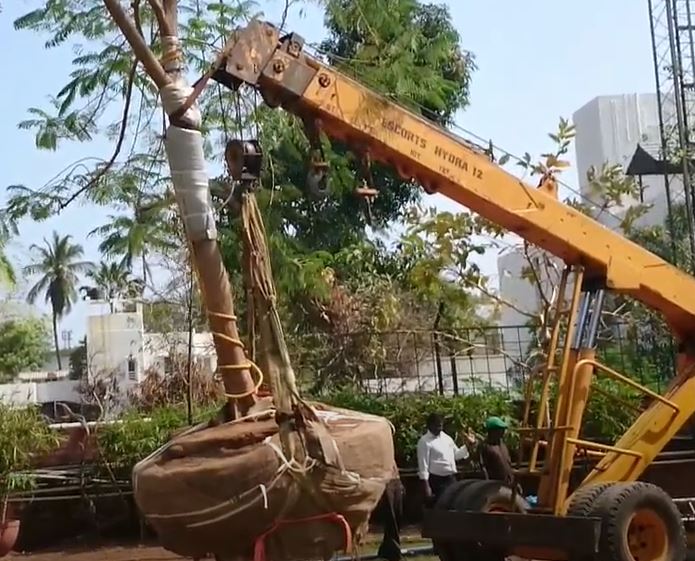The paper industry plays a pivotal role in our daily lives, providing everything from newspapers to packaging materials. However, the environmental impact of paper production has raised concerns, leading to the exploration of more sustainable alternatives.
This article delves into the paper pulp manufacturing processes from trees and bamboo, highlighting their respective steps, advantages, and disadvantages. It aims to provide a comprehensive understanding of these processes and their environmental implications.
Paper Pulp Manufacturing from Trees
Paper pulp production from trees has been the conventional method for centuries. This process primarily uses softwood and hardwood trees, each offering distinct characteristics suitable for various paper types.
Steps in the process:
- Harvesting: The process begins with the harvesting of trees from forests, which can be natural or managed plantations. Different tree species, such as pine for softwood or eucalyptus for hardwood, are chosen based on the intended paper product.
- Debarking: After harvesting, the logs undergo a debarking process to remove the outer bark, preparing them for chipping.
- Chipping: Mechanical chippers are used to cut the debarked logs into small chips. These wood chips are the primary feedstock for pulp production.
- Chemical or mechanical pulping:
- Chemical Pulping: Wood chips are subjected to a chemical pulping process. This involves cooking the chips in a chemical solution, typically a mixture of sodium hydroxide (caustic soda) and sodium sulfide. This process dissolves lignin, separating the wood fibers.
- Mechanical Pulping: In contrast, mechanical pulping involves grinding and refining the wood chips to separate the fibers. This process retains more lignin, making the resulting pulp less suitable for high-quality papers.
- Chemical Pulping: Wood chips are subjected to a chemical pulping process. This involves cooking the chips in a chemical solution, typically a mixture of sodium hydroxide (caustic soda) and sodium sulfide. This process dissolves lignin, separating the wood fibers.
- Bleaching (Optional): If high-quality white paper is desired, the pulp may go through a bleaching process to remove residual lignin and achieve the desired brightness. However, this step can have significant environmental impacts.
- Pulp Processing: After the pulping process, the pulp undergoes various treatments to remove impurities and prepare it for papermaking.
- Papermaking: The pulp is used in the papermaking process, which includes forming sheets of paper from the pulp slurry, pressing, drying, and finishing.
Pros and Cons of Trees in Pulp Manufacturing:
Pros:
- Versatility: Trees are readily available and can be used to produce a wide range of paper products, from newspapers to high-quality writing paper.
- Established Infrastructure: The paper industry has well-established infrastructure for wood pulp production, ensuring reliability and efficiency.
- Familiarity: The process of paper pulp manufacturing from trees is well understood and widely used, providing a level of consistency and predictability.
Cons:
- Environmental Impact: Tree harvesting can result in deforestation, habitat loss, reduced biodiversity, and carbon emissions, contributing to significant environmental concerns.
- Slow Growth: Trees take many years to reach maturity, straining natural resources and contributing to slower replenishment rates.
- Chemical Usage: Chemical pulping involves the use of potentially harmful chemicals, leading to pollution and waste issues if not managed responsibly.
Paper Pulp Manufacturing from Bamboo:
Bamboo has emerged as a sustainable and rapidly renewable alternative for paper pulp production. Its unique properties make it an attractive choice to mitigate the environmental impact of paper manufacturing.
Steps in the Process:
- Harvesting: Bamboo is typically harvested from bamboo groves or plantations. Its remarkable growth rate allows for frequent harvesting.
- Breaking Down Bamboo: Bamboo is split into smaller sections, and the outer skin is removed, exposing the inner fibers.
- Chemical Pulping: Similar to wood, bamboo is pulped through a chemical process. It is cooked with a mixture of chemicals, such as sodium hydroxide and sodium sulfide, to separate the fibers from the bamboo.
- Bleaching (Optional): If high-quality white paper is desired, the bamboo pulp may go through a bleaching process to achieve the desired brightness.
- Pulp Processing: After pulping and any bleaching, the bamboo pulp undergoes processing to remove impurities and prepare it for papermaking.
- Papermaking: The pulp, whether from trees or bamboo, is used in the papermaking process, involving forming sheets of paper from the pulp slurry, pressing, drying, and finishing.
Pros and Cons of Bamboo in Pulp Manufacturing:
Pros:
- Sustainability: Bamboo is an exceptionally renewable resource, known for its rapid growth. It can be harvested in as little as three to five years, significantly reducing the environmental impact associated with deforestation.
- High Fiber Content: Bamboo has a high fiber content, making it an excellent source for pulp production. The fibers are long and durable, resulting in strong paper.
- Habitat Preservation: Bamboo plantations can help preserve natural habitats, as they can thrive in areas unsuitable for traditional tree forests.
Cons:
- Limited Applications: Bamboo pulp is often best suited for specific paper products, such as tissue and packaging, rather than high-quality printing and writing paper.
- Chemical Usage: Similar to wood, bamboo pulping may involve the use of chemicals, which can pose environmental challenges if not managed responsibly.
- Processing Challenges: The processing of bamboo pulp may require adjustments and different machinery compared to traditional wood pulp manufacturing.
In conclusion, both tree-based and bamboo-based paper pulp manufacturing processes have their advantages and disadvantages. Trees are versatile but come with significant environmental concerns, while bamboo is a sustainable alternative but may have limitations in the range of paper products it can produce.
As the world seeks more sustainable solutions, bamboo-based paper pulp manufacturing is gaining traction due to its rapid renewability and potential to reduce the environmental impact of the paper industry. However, a balanced approach that considers both raw materials’ strengths and weaknesses may be the most prudent way to address the complex challenges facing the paper industry. With proper management and innovation, the paper industry can transition toward more environmentally friendly practices while still meeting the growing demand for paper products.
Links to video on YouTube for better understanding
1. How paper is made
2. How paper is made using Bamboo


